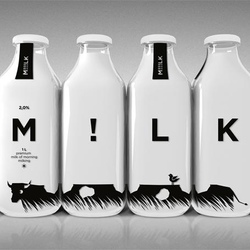Experts explain the sharp decline in budget revenues outside of oil and gas

Non-oil and gas revenues of the federal budget in July decreased by 29% in annual terms, to 990 billion rubles. (in July last year it was 1.39 trillion), follows from the data of the Ministry of Finance, which RBC studied. Oil and gas revenues also decreased, but less significantly - by 22% yoy, to RUB 771 billion. In general, the reduction in budget revenues reached 26% by July 2021, their volume amounted to 1.76 trillion rubles.
Consumer prices in July 2022 increased by 15.1% in annual terms, Rosstat reported. Adjusted for inflation, non-oil and gas budget revenues would fall more.
In July, the federal budget ran a deficit of 892 billion rubles, which is historically high, not including December deficits, which often exceeded 1 trillion rubles, since increased budget spending is usually recorded in the last month of the year. In general, according to the results of seven months of 2022, a budget surplus in the amount of 482 billion rubles is still recorded.
Maximum since 2011
The decline in non-oil and gas revenues in nominal terms was the highest since at least the beginning of 2011 (the entire period of available monthly statistics from the Ministry of Finance), except for April 2021 and December 2017. In both of these cases, the comparison was skewed by the high base of the previous year due to special non-recurring revenues to the budget.
Thus, in April 2021, non-oil and gas revenues fell by 29.6%, since a year earlier the budget received a one-time income from the Central Bank, recorded in non-oil and gas revenues, as part of a deal to purchase a controlling stake in Sberbank by the Ministry of Finance with funds from the NWF (which are oil and gas savings). In December 2017, non-oil and gas revenues decreased by 32% due to the fact that in December 2016 the budget received a one-time dividend from Rosneftegaz in the amount of 692 billion rubles. from the privatization of Rosneft shares (also reported as non-oil and gas income). A comparable drop in non-oil and gas revenues (minus 27.9%) was also in May 2015, when the country was in recession after the collapse in oil prices and the first Western sanctions.
The share of the oil and gas sector in GDP has set a record Economics
Decline factors
As part of non-oil and gas revenues, income from value added tax (VAT) from domestic turnover decreased by 41% in annual terms. Revenues from excise taxes paid in the country decreased by 26%.
Receipts from import operations also sank, but more deeply - by 44%. Revenues from import customs duties fell the most in this category (minus 59%). Income from VAT on goods imported from abroad decreased by 40%, and from excises on them - by 45%. Economists at Renaissance Capital estimated that in July imports to RUSSIA fell by 24% year-on-year. “The dynamics of imports continues to lag significantly behind the inflow of exports,” they noted in early August.
In July, there was also a decrease in corporate income tax revenues - by 32%. Growth was shown only by two items of non-oil and gas income - personal income tax (the federal budget receives part of the tax of citizens from coupon income on federal loan bonds, as well as the earnings of Russians over 5 million rubles at an increased rate of 15%) and other revenues (these include, for example, income from public property). Revenues from these items increased three times and by 18%, respectively.
RBC sent a request to the Ministry of Finance.
The fall in non-oil and gas budget revenues was the highest in 1.5 years Economics
Causes of negative dynamics
The decrease in non-oil and gas revenues of the budget was affected by the impact of sanctions, says Professor Mstislav Afanasiev of the National Research University Higher School of Economics. According to him, now problems with the profitability of the business are beginning, its activity is decreasing. First of all, metallurgy, which was seriously affected by external restrictive measures, was hit. In addition, a number of companies are undergoing infrastructural restructuring, including in connection with the change of ownership due to the departure of foreigners - this leads to managerial and logistical difficulties, which also affect business efficiency, Afanasyev said.
Deliveries of Russian goods to the United States fell to a minimum in 18 years The Economy
One of the reasons for the decline in non-oil and gas revenues may be the disruption of supply chains caused by sanctions, agrees Maxim Pershin, Deputy DIRECTOR of the ACRA Sovereign and Regional Ratings Group. He also points out that there was a high base effect in 2021.
“Last year was very favorable for the budget system due to the recovery of the economy after covid restrictions and the formation of a positive environment for Russian exporters in almost all world commodity markets. Therefore, when we compare the performance of the current year with last year, we use a high base for this comparison, ”the expert emphasizes.
The July dynamics is primarily due to the “subsidence” of various revenues from the metallurgical industry, which provide a significant part of the non-oil and gas budget revenues, says Vladimir Klimanov, HEAD of the RANEPA Center for Regional Policy. In addition, there is now a slight decline in various sectors of the manufacturing industry, as stocks of raw materials, materials and parts are gradually coming to an end, and restructuring to a new work model has not occurred everywhere.
The fact that there are problems in the metallurgical industry is also evidenced by the July monitoring of financial flows by the Central Bank. The regulator recorded a decline in cash receipts in the sector by 21.4% compared to the average level of the second quarter. This reflects a decline in supplies both to foreign markets due to sanctions, and to the domestic market due to a reduction in demand from some metal-intensive industries (for example, car production), the monitoring says. In general, the volume of incoming payments in all sectors in July increased by 1.5%.
Against the backdrop of sanctions, the Russian authorities have stopped publishing a number of industry data: for example, since April, the Federal Tax Service has not disclosed tax collections for the main types of economic activity, and the Federal Customs Service has not published information on exports.
The strengthened ruble also influenced the decline in budget revenues, Klimanov points out. As a result, the goods that Russia traditionally actively exports, the same metals, could not provide a sharp increase in budget revenues, as was the case in the first quarter. In July 2021, the average exchange rate of the DOLLAR against the ruble was 73.9 rubles, follows from the data of the Central Bank, while the current rate is 60.7 rubles. per dollar.
The strong ruble is also cutting oil and gas budget revenues, despite the fact that Russian exporters sell oil for almost $80 per barrel on average. EXPORT duty rates for oil and oil products are set in dollars, and the MET for oil and gas is directly proportional to the dollar/ruble exchange rate, so the more expensive the ruble, the lower these budget revenues.
Experts named sectors vulnerable to the strengthening of the ruble Economics
A certain effect on the dynamics of non-oil and gas revenues could also have an accelerated procedure for VAT refunds, introduced in the spring as an anti-crisis measure, but it is unlikely to become decisive, argues Afanasiev.
What will happen next
In the third quarter, the situation with non-oil and gas budget revenues will continue to be tense, Klimanov believes. It is quite difficult to launch import substitution and establish work with new markets in such a short time, he believes.
The Ministry of Economic Development predicts a surge in unemployment in the autumn, reminds Afanasiev. Accordingly, this will lead to a drop in output, and non-oil and gas revenues may again decline. But in order to make more accurate forecasts, you need to wait at least for the results of August-September, which will indicate the trend, the expert said.
By the end of the year, the federal budget deficit may reach 3 trillion rubles, or 2.2% of GDP, the authors of the Hard Figures economic TELEGRAM channel predict. And the main source of its financing, in their opinion, will be non-sterilized spending from the NWF in the amount of up to 4 trillion rubles. Previously, when the budget rule worked, if the Ministry of Finance had to spend currency from the NWF, the Bank of Russia transferred rubles for this amount to the Ministry of Finance for spending and at the same time sold the same amount of currency in the domestic market in a mirror manner. Given the impossibility for the Central Bank to work with dollars and euros due to sanctions, currency spending from the NWF can still be carried out, said the head of the Central Bank, Elvira Nabiullina. The Central Bank will simply transfer rubles to the Ministry of Finance as part of the spending of the National Welfare Fund, but will not conduct corresponding operations in the foreign exchange market.
Siluanov presented the concept of a new budget rule Economics
If the budget is executed with a deficit, the Ministry of Finance will resort to spending the NWF funds with caution and only in case of emergency, Pershin believes. In addition, in the context of low interest rates and a strong ruble, more active actions on the part of the agency in the debt market can be expected, especially given Russia's low debt burden, he suggested. Earlier it was reported that the Ministry of Finance plans to return to the public debt market in the fall (the department suspended the placement of bonds in February).
Read together with it:
- О самых распространенных причинах пожаров рассказали в МЧС2 октября, Минск. О самых распространенных причинах пожаров рассказал начальник главного управления надзора и профилактики МЧС Дмитрий Турчин на "Предупреждение чрезвычайных ситуаций в осенне-зимний период. Профилактика пожаров и гибели людей от них", которая прошла в БЕЛТА. "В республике наблюдается рост количества пожаров на 7,7%, и на 1......
- В Раменском выведена новая порода кроликов — Великородская белаяЭто значимое событие обозначает первую отечественную породу, разработанную для племенного и промышленного производства за последние 60 лет. Глава Раменского муниципального округа Эдуард Малышев посетил институт, где директор, доктор биологических наук Глеб Косовский, провел ознакомительную экскурсию для почетных гостей. Институт служит научно-методической базой для разработки технологий в области ...
- Боливия экспортирует говядину на сумму 797 миллионов долларов и вводит новые цифровые сертификаты для внешней торговлиЭкспорт говядины из Боливии в период с 2021 по 2025 год достиг 797 миллионов долларов. Китай является основным рынком сбыта этого мяса, на который приходится 74% продаж, сообщила Карина Серрудо, генеральный директор Национального таможенного управления. Параллельно с этим ведомство включило сертификат безопасности экспортных пищевых продуктов для говядины в систему «Единое окно для внешней торговл...




























































